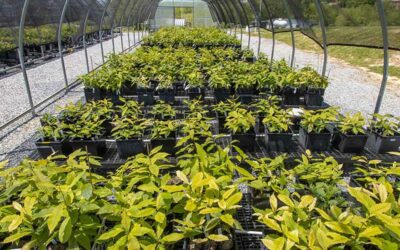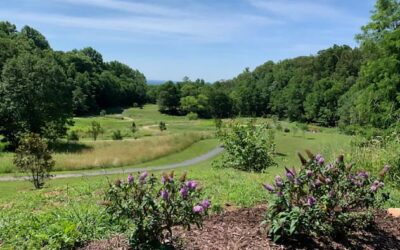Upcoming Events
Our Mission
The mission of the Carolinas Chapter is to assist in the work of The American Chestnut Foundation in bringing about a revival and a renewal of the American chestnut tree as a prominent part of the forests of the United States of America by strengthening the organization’s financial and membership base, education, public awareness, and research activities.
Once there were over four billion American chestnut trees in the United States. One out of every four trees in the Appalachian forests was a chestnut! From Maine to Mississippi, American chestnut trees thrived and matured as the dominant species, towering over their neighbors the oaks, hickories, and tulip poplars. And they were huge. One tree near Waynesville, NC, was over 17 feet in diameter — 53 feet in circumference!
Foresters called the American Chestnut “the most useful tree in the woods”,because it provided abundant food for wild animals and livestock, a cash crop for mountain farmers, a light, yellow-colored wood for furniture, and rot-resistant lumber for fences, utility poles, and siding.
In 1904 the chestnut blight disease, caused by an Asian fungus Cryphonectria parasitica, was discovered in the Bronx Zoo of New York City. The blight spread quickly by air and on the bodies of insects, birds, and animals.
By the 1930´s, almost all the mature chestnut trees in the Carolinas were dying back to their roots. Thanks to soil organisms, however, many of the roots remain alive, sending up small sprouts that constantly die back from the blight even today.
Now, with an approach called backcross breeding, the American Chestnut Foundation and its Carolinas Chapter are working to revive this great King of the Forest. Within a decade, we expect to have blight-resistant trees ready for testing in North and South Carolina. It is our hope and expectation that the American chestnut will resume its place as a significant species in our forests. The members of the Carolinas Chapter of The American Chestnut Foundation are heavily involved in reaching this goal: finding surviving trees, pollinating them, harvesting seed, and planting orchards for eventual reforestation. We sincerely appreciate the dedication, hard work, and enthusiasm of our members and ask you to join us in our efforts to save this great tree.
Carolinas Chapter Board of Directors
Doug Gillis, Charlotte, NC, President
Peggy MacDonald, Leicester, NC, Vice President
Betsy Gamber, Mebane, NC, Secretary-Treasurer
Haiying Liang, Clemson, SC, Membership and Outreach Officer
Nate Osborne, Leicester, NC
Shan Swartz, Asheville, NC
Jon Taylor, Asheville, NC
Carolinas Chapter Website Administrator
Kimberly Greenway, Asheville NC
Latest News
“Chestnut Talk” with Doug Gillis of The American Chestnut Foundation
Doug Gillis, President of the Carolinas Chapter of TACF, will be giving a "Chestnut Talk" on January 25, 2024 at the Waxhaw-Weddington Rotary Club. Come have a cup of coffee and learn about the work to save the American Chestnut. Time of the meeting is 7:30 am to...
TACF’s 40th Anniversary Celebration- Come Celebrate With Us!
Come celebrate TACF’s 40th Anniversary with the Carolinas Chapter at the picturesque Fonta Flora Brewery location at Whippoorwill Farm in Nebo, NC! Join us from 12:00-3:00PM at the brewery to try Fonta Flora's release of Bread Tree, a brown ale brewed with local...
The Chestnut Tree Orchard in The Park at Glassy
The Park at Glassy is a beautiful, expansive, woodland sanctuary below the upper post office and the Children’s Village near the top of Glassy Mountain. It comprises 17 acres of sunny open areas, walking paths, shaded woodland trails, a waterfall, and several 100-yr...



